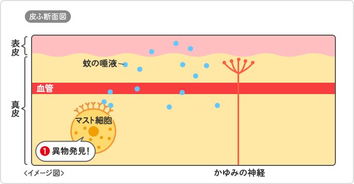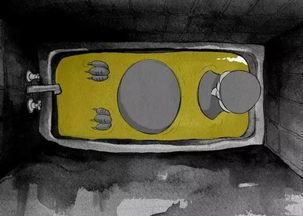
Insect Bite Symptoms: A Comprehensive Guide
Have you ever found yourself scratching an itchy bump on your skin, wondering if it’s just a minor irritation or something more serious? Insect bites can range from mild to severe, and their symptoms can vary widely. Understanding the signs and symptoms of insect bites is crucial for proper treatment and prevention. Let’s delve into the details of insect bite symptoms, their causes, and what you can do to alleviate the discomfort.
Common Symptoms of Insect Bites

When an insect bites you, it injects its saliva into your skin, which can cause a variety of symptoms. Here are some of the most common ones:
-
Redness and Swelling: This is often the first sign of an insect bite. The area around the bite may become red and swollen, sometimes to the point of forming a bump or blister.
-
Pain and Itching: The bite area may feel painful or itchy, and this sensation can last for several hours or even days.
-
Wheal: A wheal, or raised bump, may form around the bite. This is a result of the body’s immune response to the insect’s saliva.
-
Discomfort: Depending on the severity of the bite, you may experience discomfort, ranging from mild to severe.
Types of Insect Bites

There are numerous types of insects that can bite humans, each with its own set of symptoms. Here are some of the most common insects and their associated bite symptoms:
| Insect | Common Symptoms |
|---|---|
| Mosquitoes | Redness, swelling, itching, and a small, white bump |
| Bees and Wasps | Redness, swelling, pain, itching, and a large, raised bump |
| Spiders | Redness, swelling, pain, itching, and a small, red bump |
| ticks | Redness, swelling, pain, itching, and a small, red bump |
| Flies | Redness, swelling, itching, and a small, red bump |
Diagnosing Insect Bites

Diagnosing an insect bite is usually straightforward, as the symptoms are typically visible and well-known. However, if you’re unsure about the cause of your bite, or if the symptoms are severe, it’s best to consult a healthcare professional. They can provide a proper diagnosis and recommend the best course of treatment.
Treatment for Insect Bites
Most insect bites can be treated at home with over-the-counter remedies. Here are some tips for managing the symptoms:
-
Cool Compress: Apply a cool, wet compress to the bite area to reduce swelling and alleviate pain.
-
Antihistamines: Over-the-counter antihistamines can help relieve itching and reduce inflammation.
-
Topical Creams: Calamine lotion or hydrocortisone cream can help soothe the skin and reduce itching.
-
Hydrogen Peroxide: Applying a small amount of hydrogen peroxide to the bite can help clean the area and prevent infection.
Preventing Insect Bites
Preventing insect bites is always better than dealing with the symptoms afterward. Here are some tips to help you avoid getting bitten:
-
Wear Long-Sleeved Clothing: When spending time outdoors, especially in areas with high insect populations, wear long-sleeved shirts and pants to minimize exposed skin.
-
Use Insect Repellent: Apply a DEET-containing insect repellent to your skin and clothing to deter insects.
-
Stay in Well-Lit Areas: Insects are more likely to bite in dark, damp environments. Stay in well-lit areas






